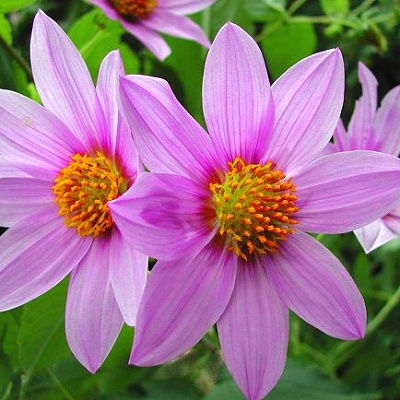Rooting the cuttings
Please plant your cuttings as soon as you receive them. I would use a container about 1 gallon (4 liters) in size, with drainage holes. Start with a well-draining soil mix. A typical mix is 1 part potting soil to 1 part perlite. An alternite mix is 2 parts perlite or coarse horticultural sand to 1 part coir fiber or peat, with some slow-release fertilizer mixed in. If your cuttings have leaves, keep a plastic bag over them so they don't dry out. Plant the branch vertically about half-way in the soil so that at least one of the nodes is under the soil. I have marked the cuttings so that you know which end goes "down". Do not plant them upside down! It's not necessary to use a rooting hormone like Rootone, or a fungicide, but if you have it, dust the branch with it first. After planting them, don't pack the soil down. Add just enough water so the soil is lightly moist throughout, but not fully saturated. Try to keep it this moist until they root. Put the pots in a spot that is bright but without direct sun, and about 65-75 degrees F (18-24°C) day and night. I recommend placing a minimum/maximum thermometer near them. The cuttings should begin sending out roots within 1 to 2 months. Important: Cuttings often send out new growth before they have actually rooted, so don't give any direct sun until the branch is solidly rooted when you tug on it and has several inches of new growth. Once it is well-rooted, start giving it either filtered sun, or 2-3 hours of morning or late afternoon sun. Increase the sun a little at a time until it is in about a half day of sun by the time it is 3 feet (1 meter) tall. This species will probably want some protection from hot afternoon sun. If the cuttings are taking a long time to root, scratch the stem with your fingernail to see if it's green inside, which means it's still alive. Fertilizer -- About every 2 months, give a general-purpose fertilizer, following the directions on the package. Planting out -- Once the plant is 3 feet (1 meter) tall, it may be planted in the ground in suitable areas. If you keep it in a pot, use as large a pot as possible. In hotter climates, try to shade the pot to keep the roots cool, and avoid using a black pot. Climate -- Dahlia tenuicaulis comes from mountain cloud forests, where the temperature is mild all year and nights are cool. I don't have much information on its climate tolerances, but it's possible that it may not flower during hot weather with warm nights. The tubers are probably hardy down to about 20 degrees F (-7 degrees C) if planted deep. In colder areas, you may grow the plant in a pot and move it indoors for the winter, pruning it to the base if desired. This Dahlia seems to prefer part sun, and may need to be shaded from strong afternoon sun. Watering -- Mature plants grown in the ground can be fairly drought-tolerant, but for the first couple of years, aim to keep the soil evenly moist most of the time. Pruning -- Pruning isn't necessary except to shape the plant or keep it short. Cutting the tip will make the plant bushier. Bugs to watch for -- Spider mites, aphids, leaf-miners, snails/slugs. Have fun growing them! - Jeff Strange Wonderful Things
|
|||||||||


